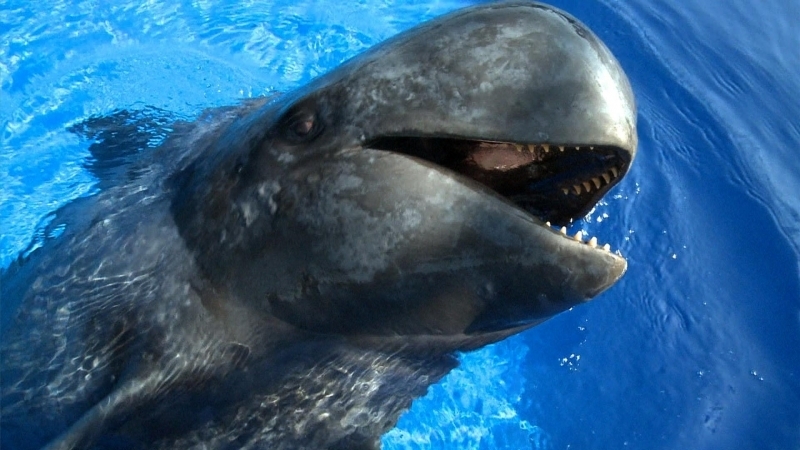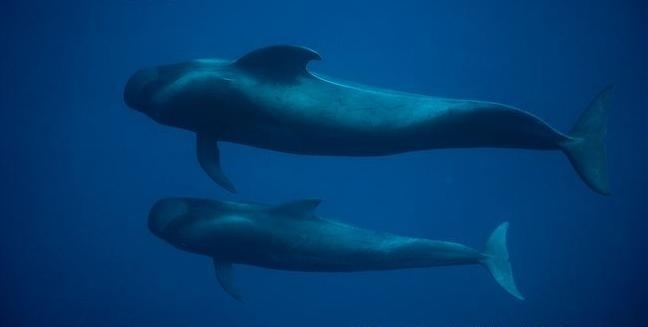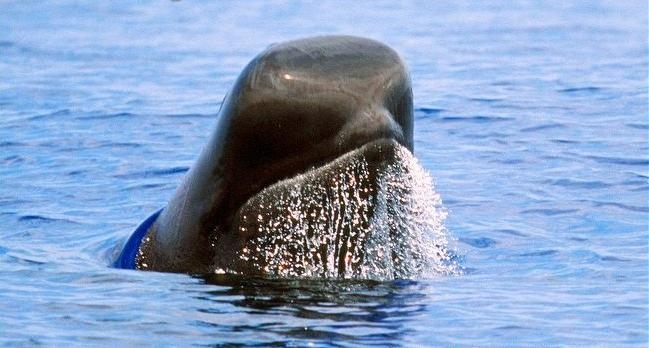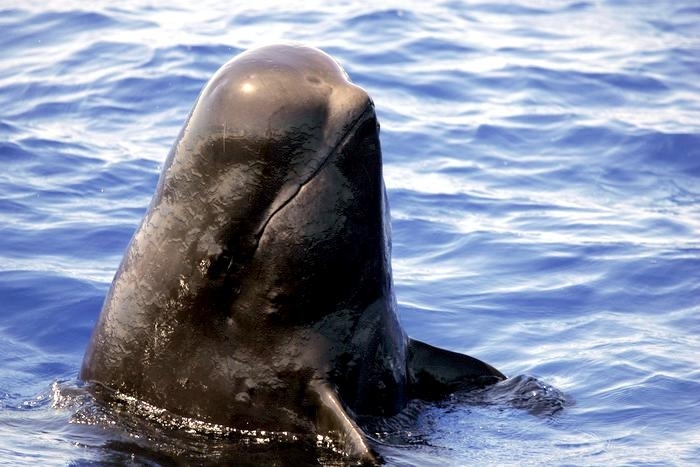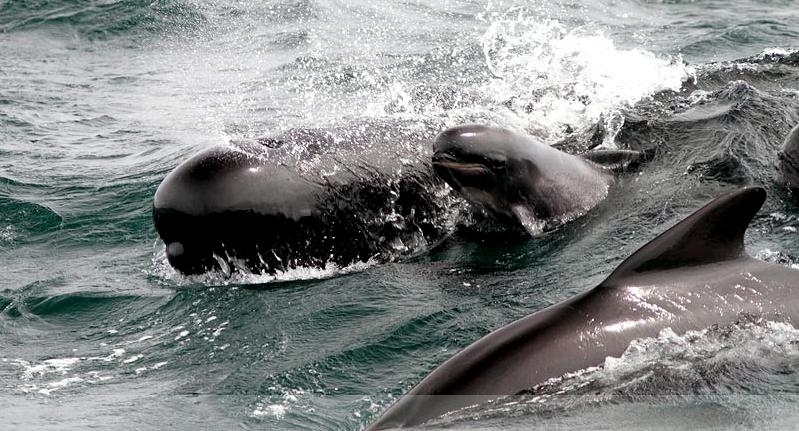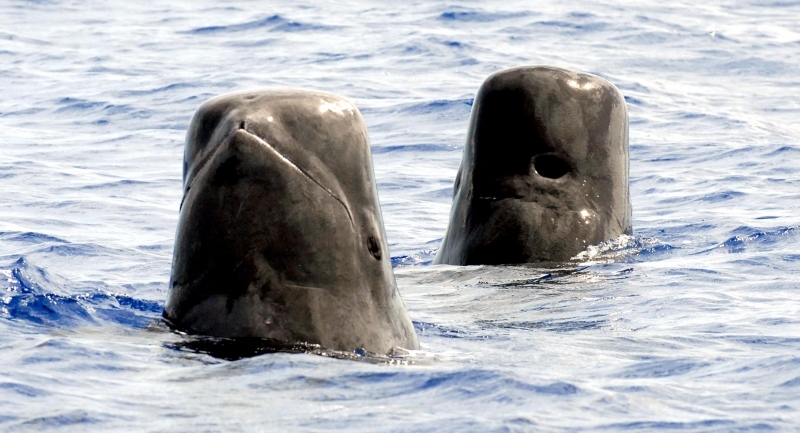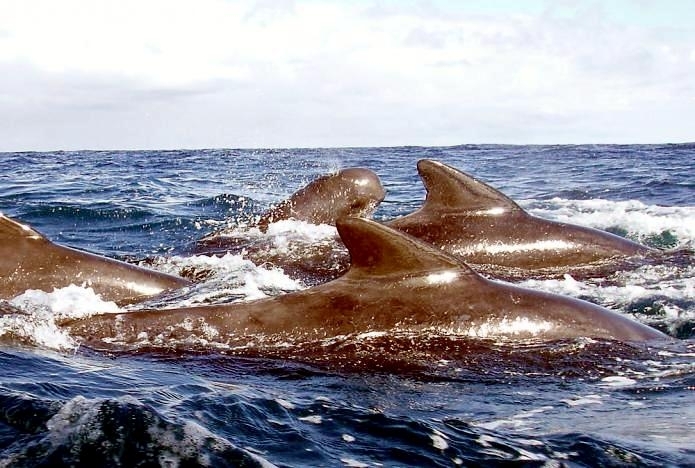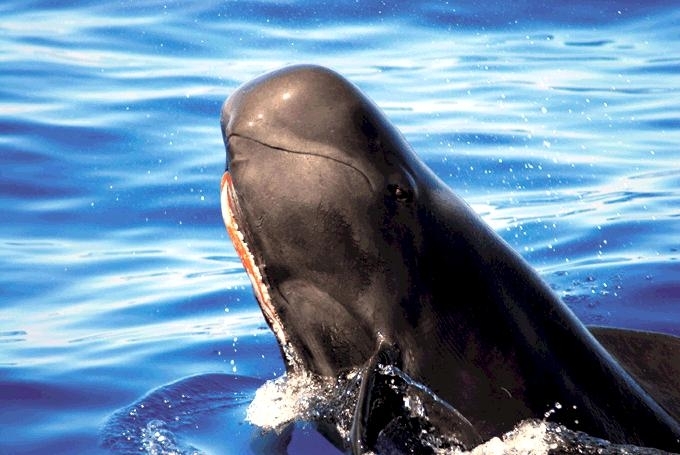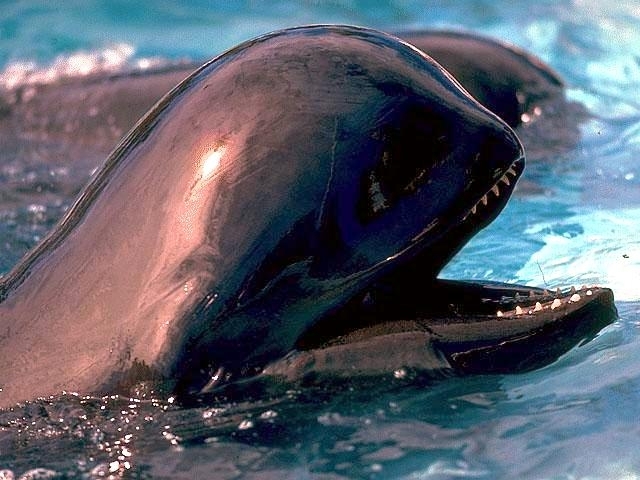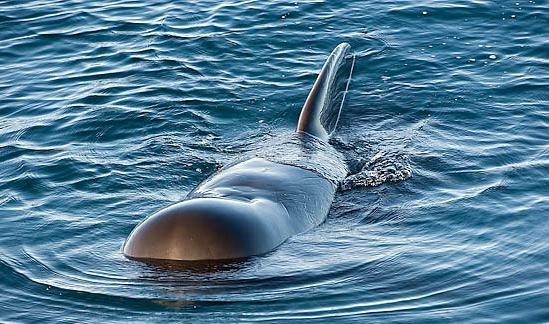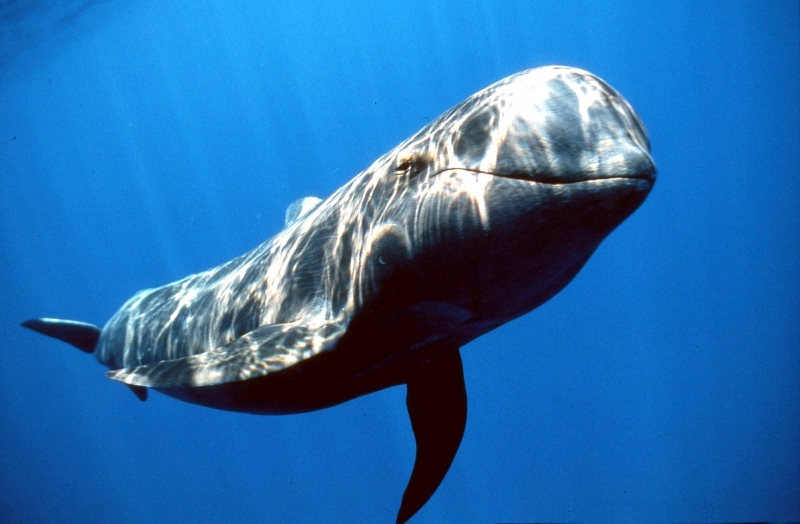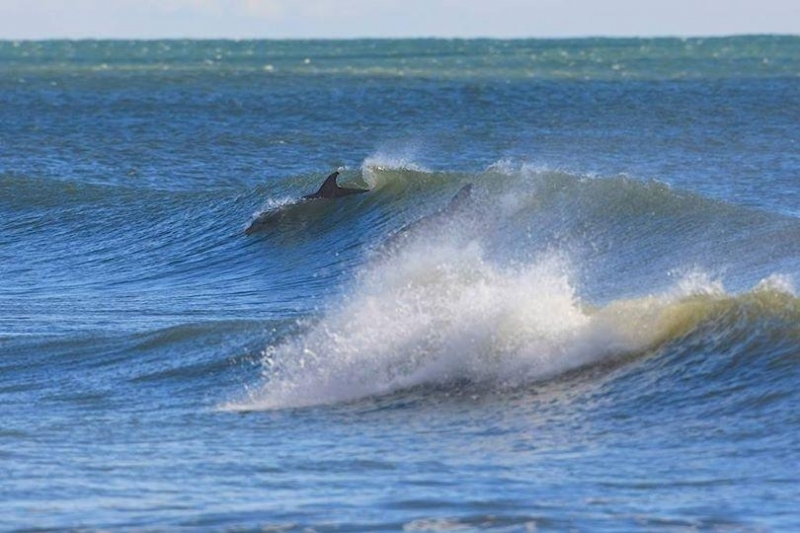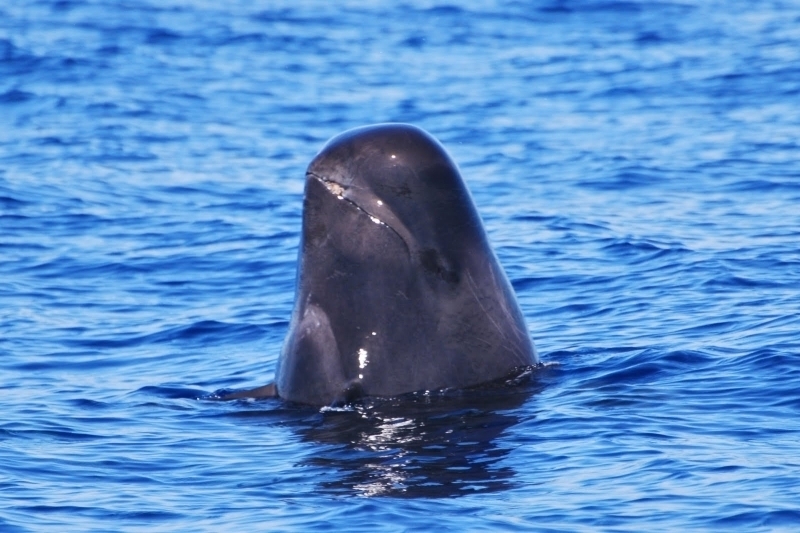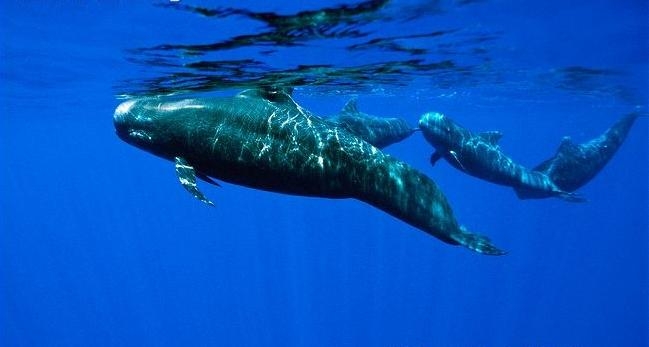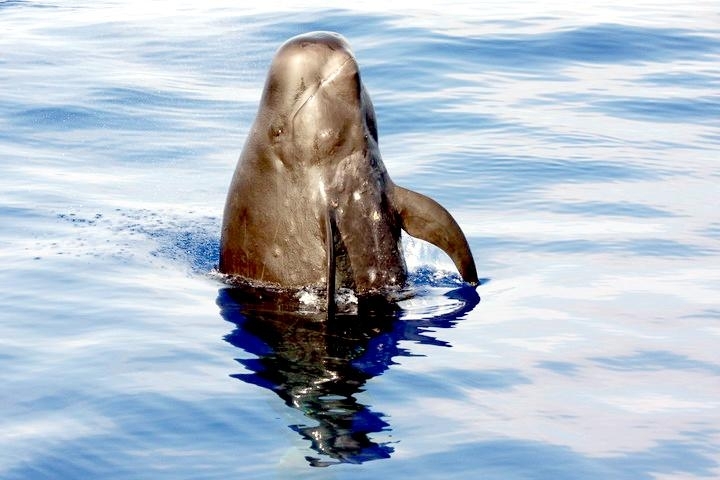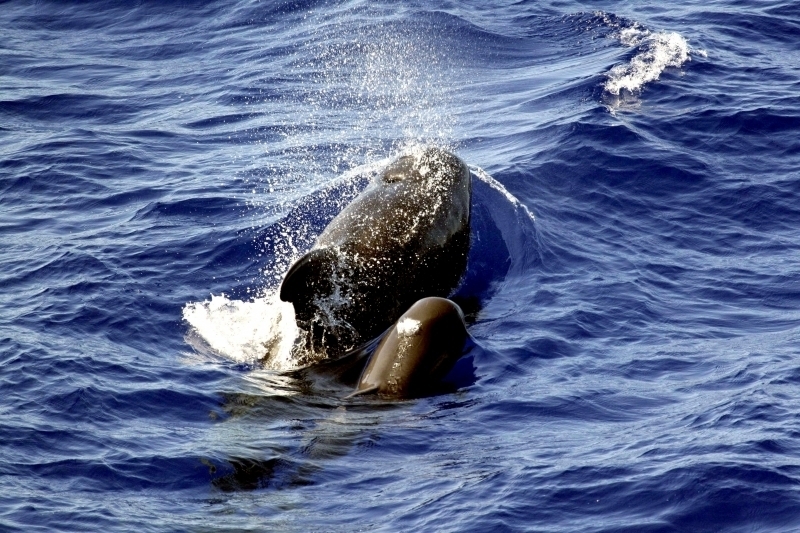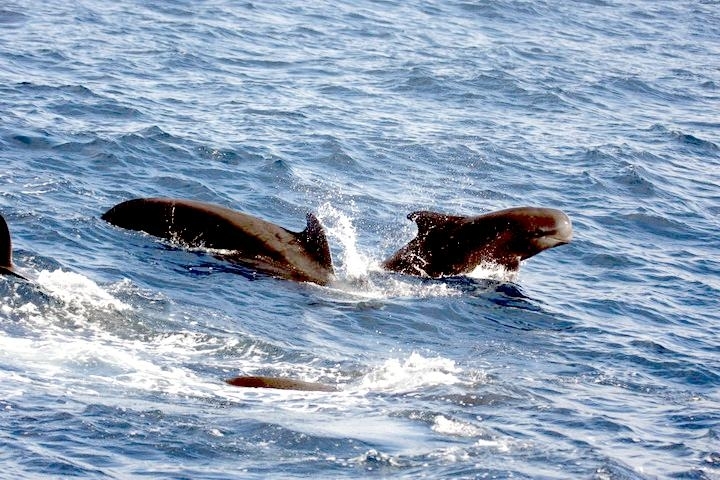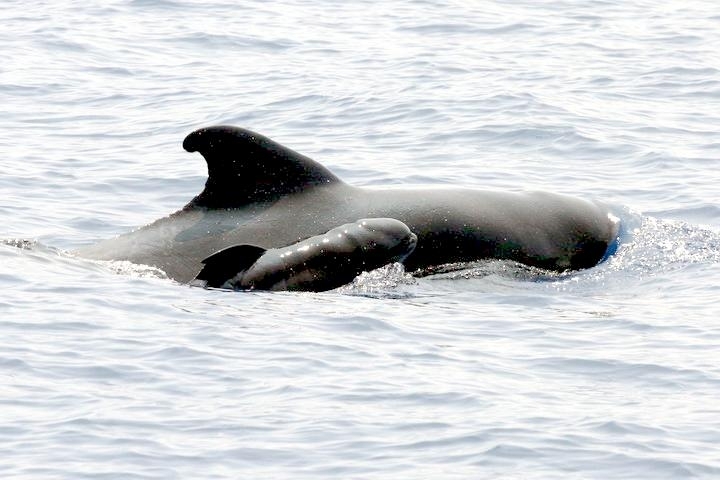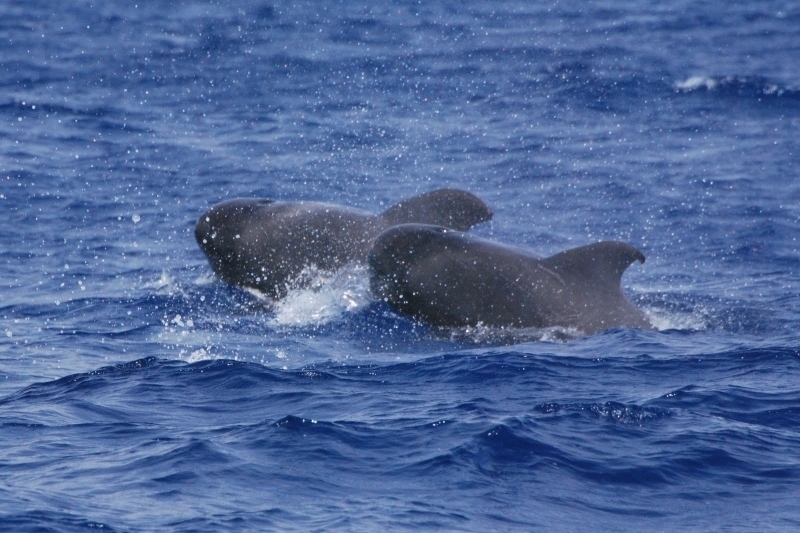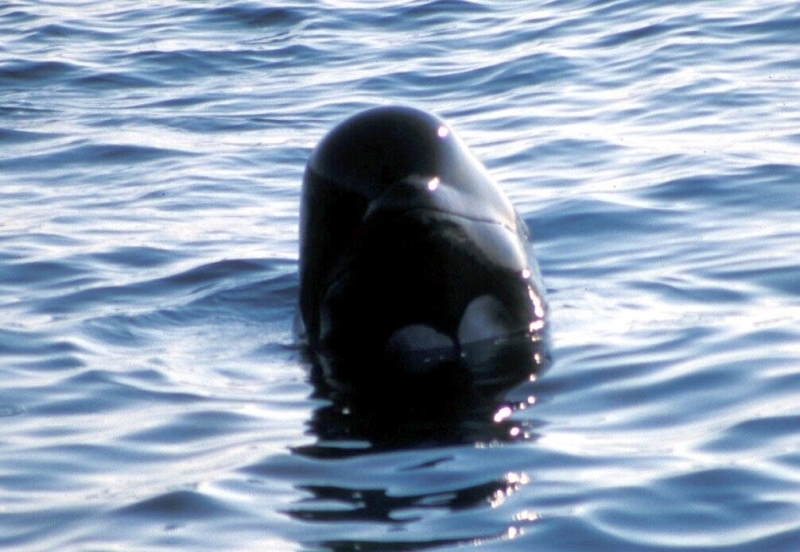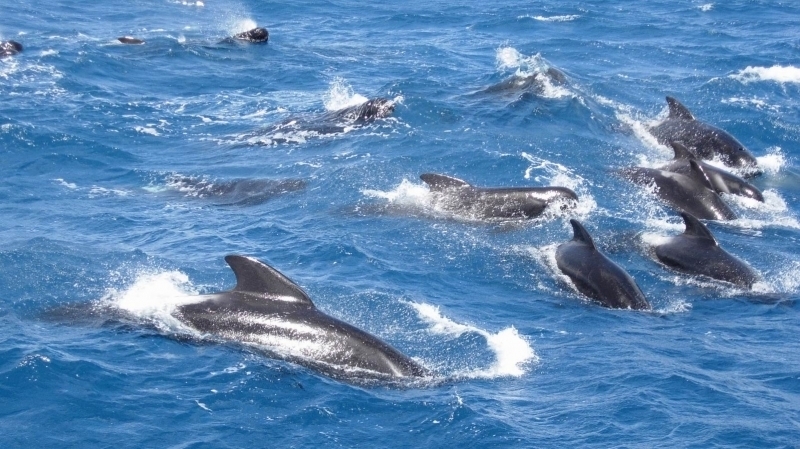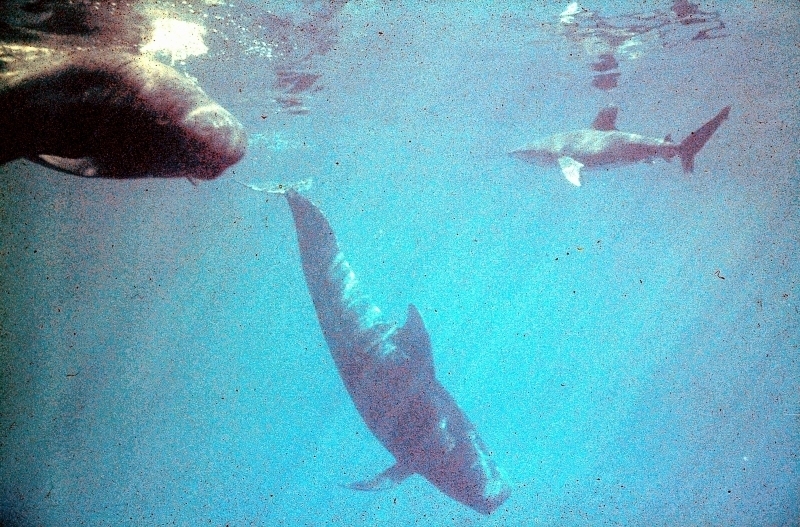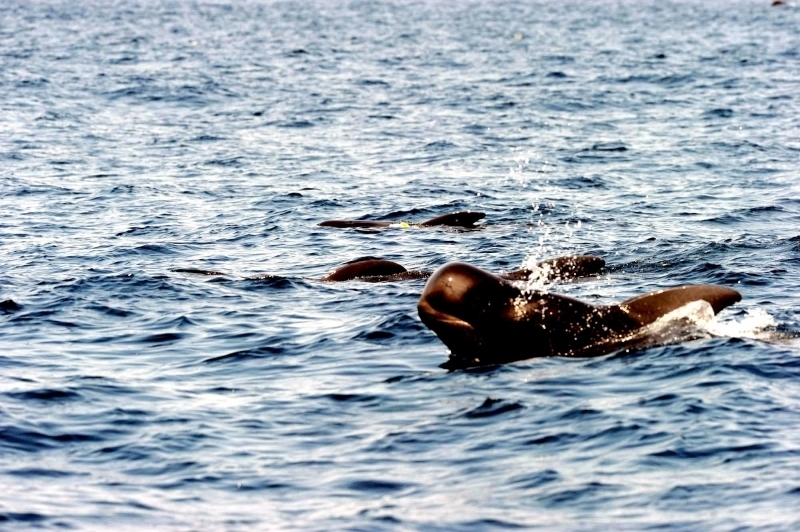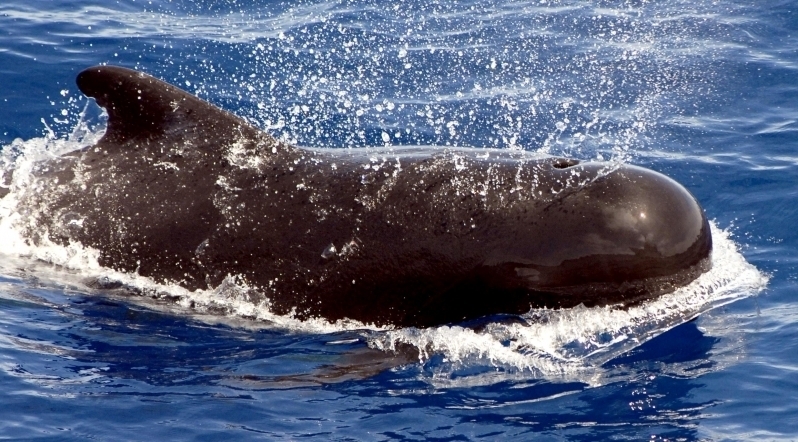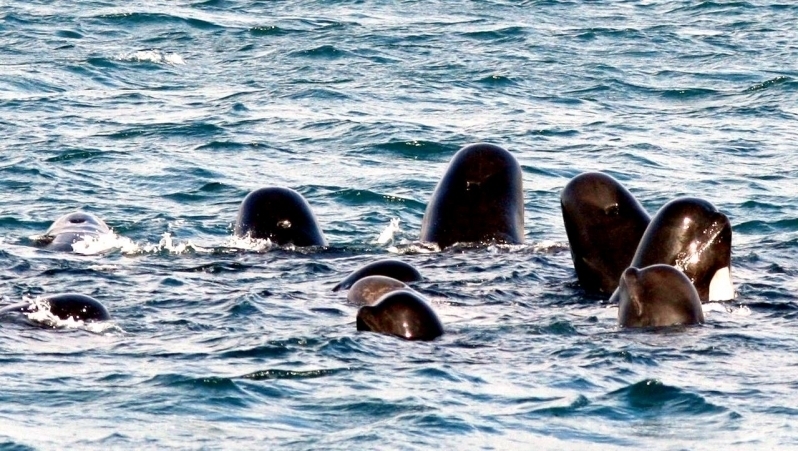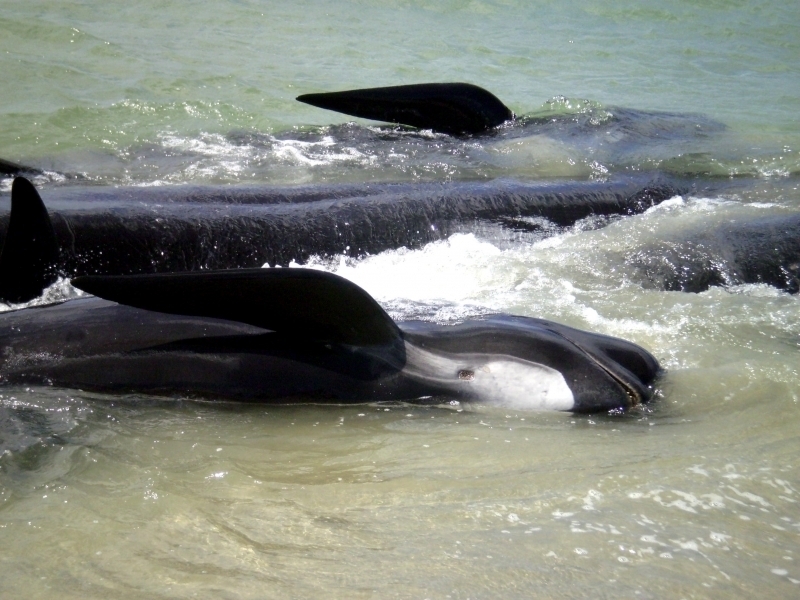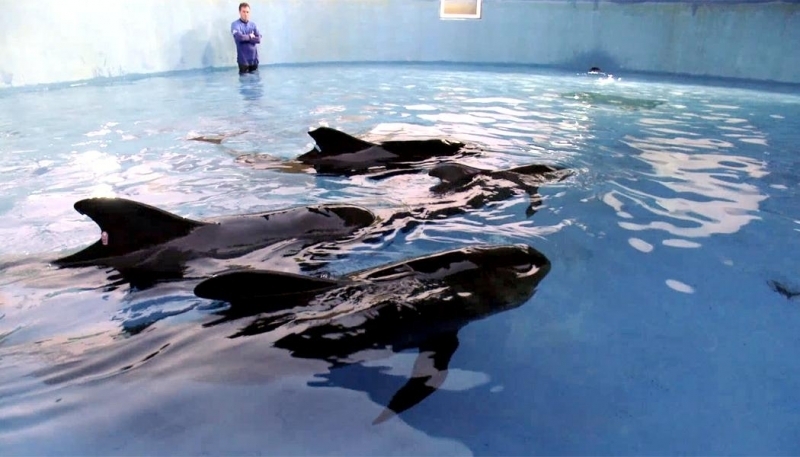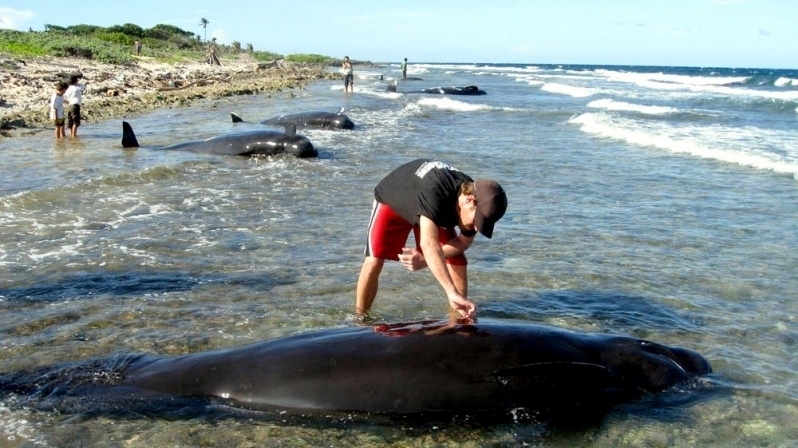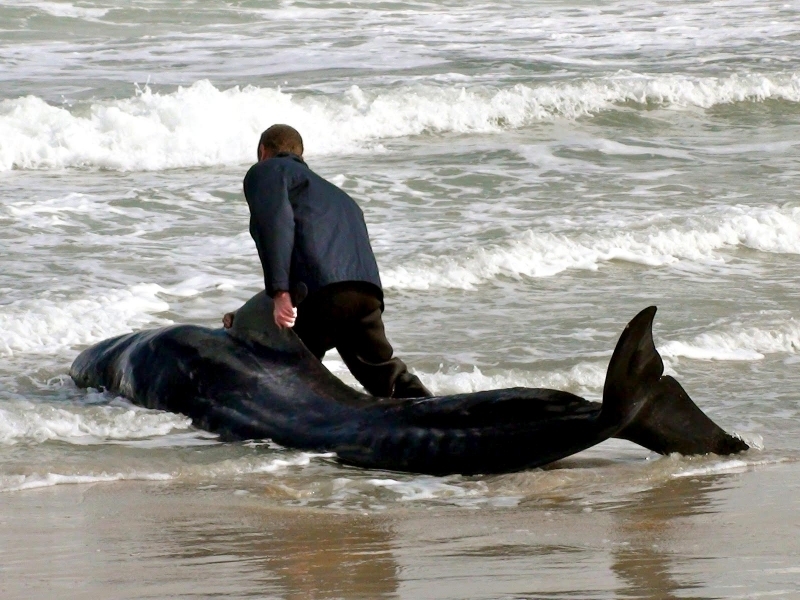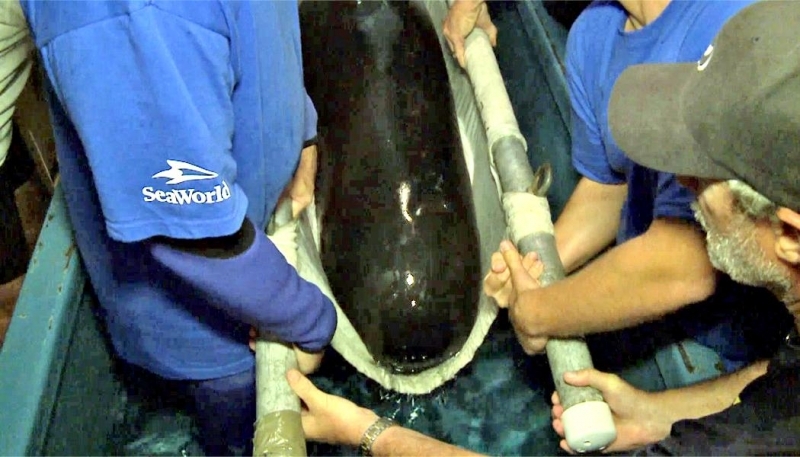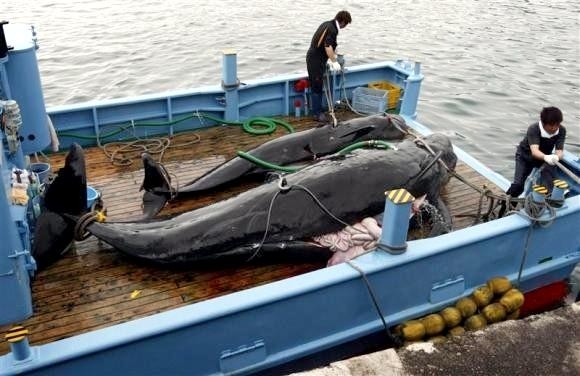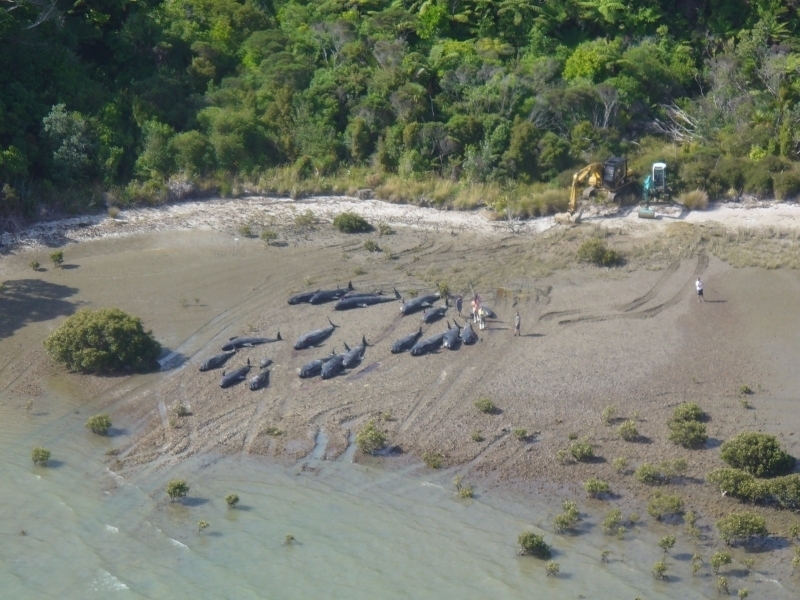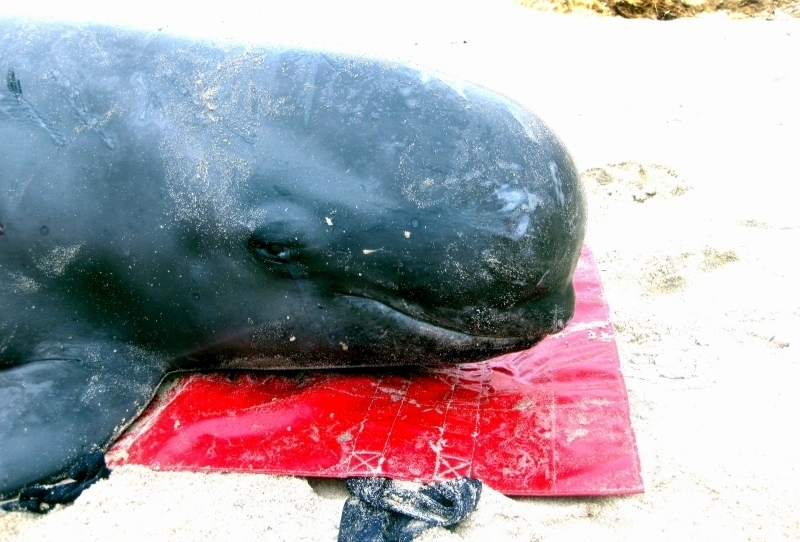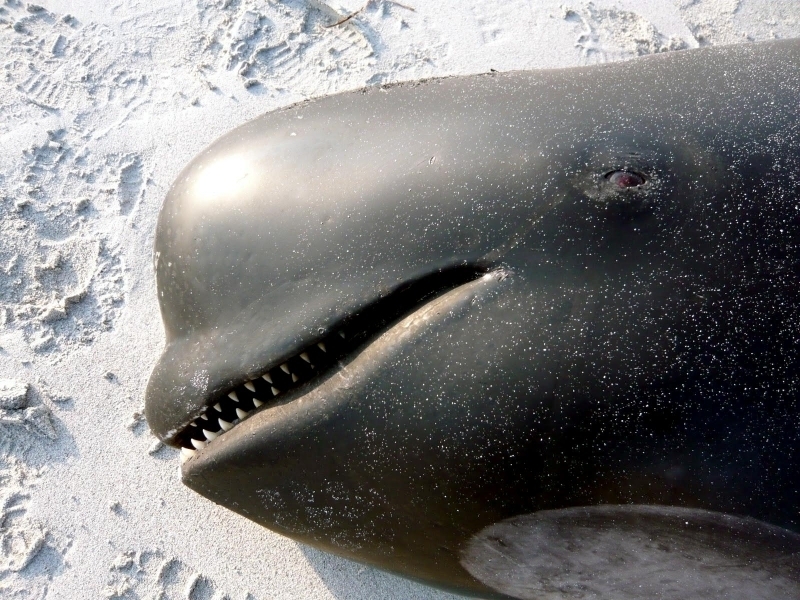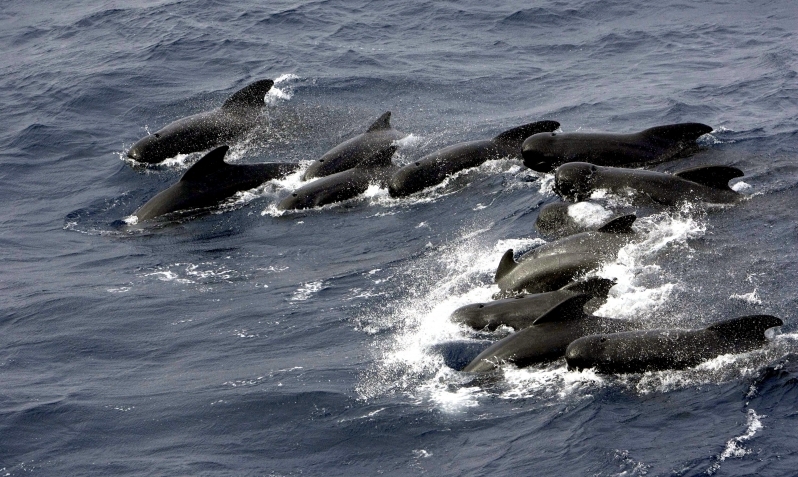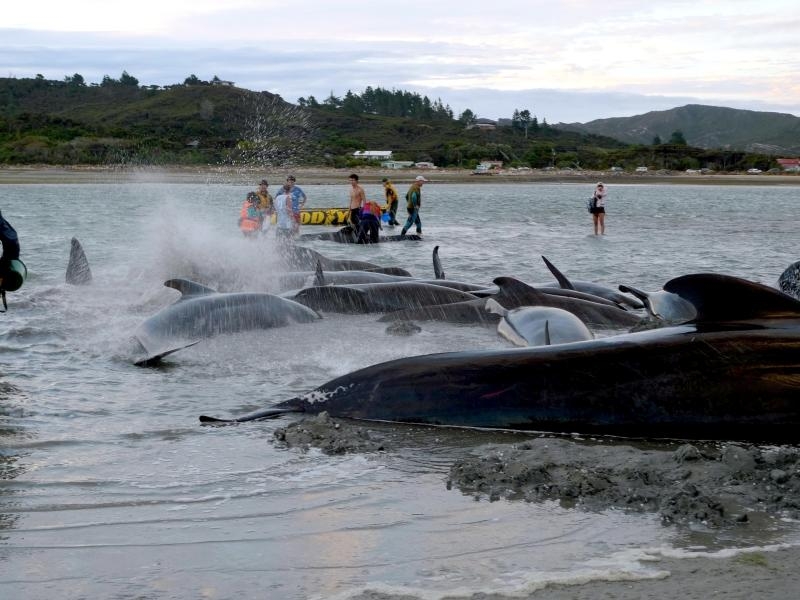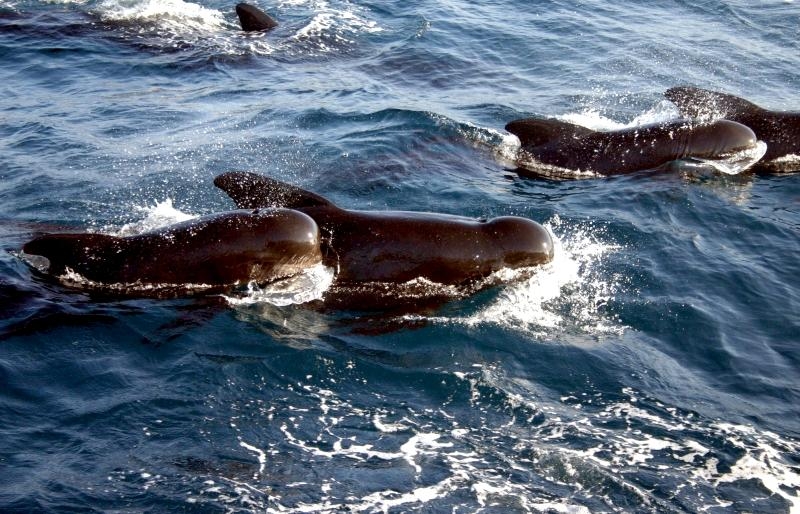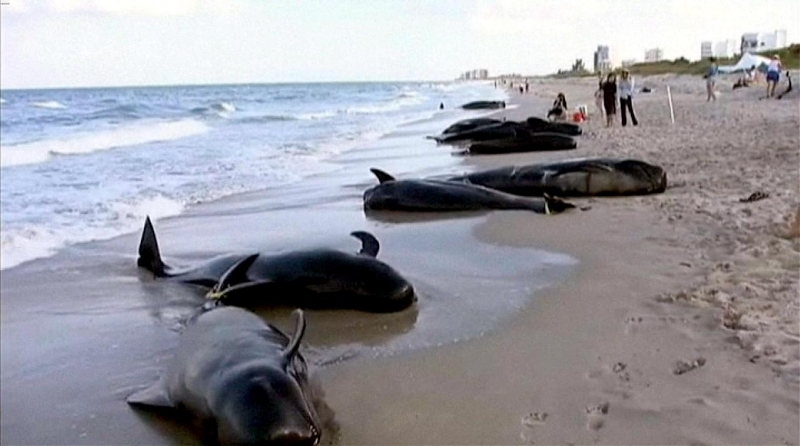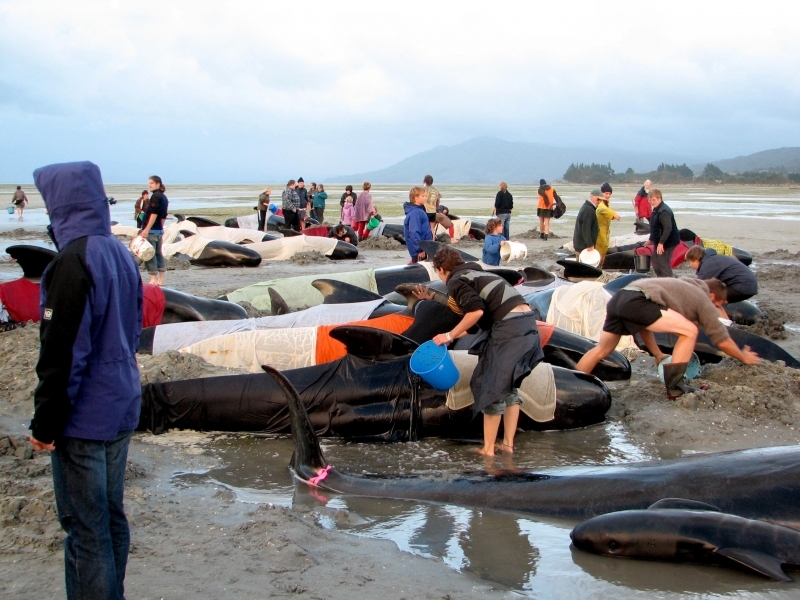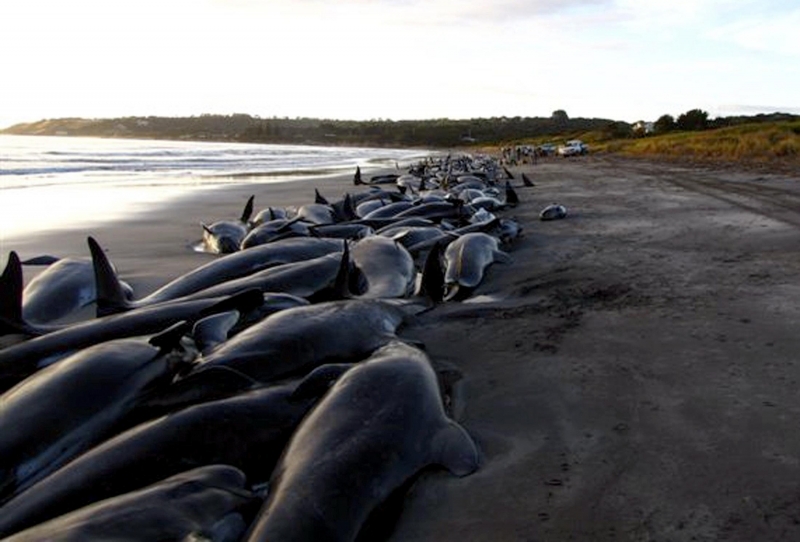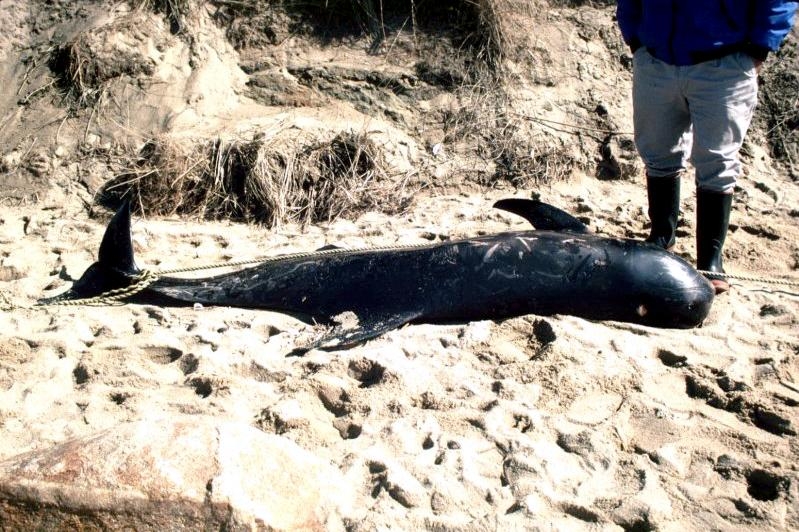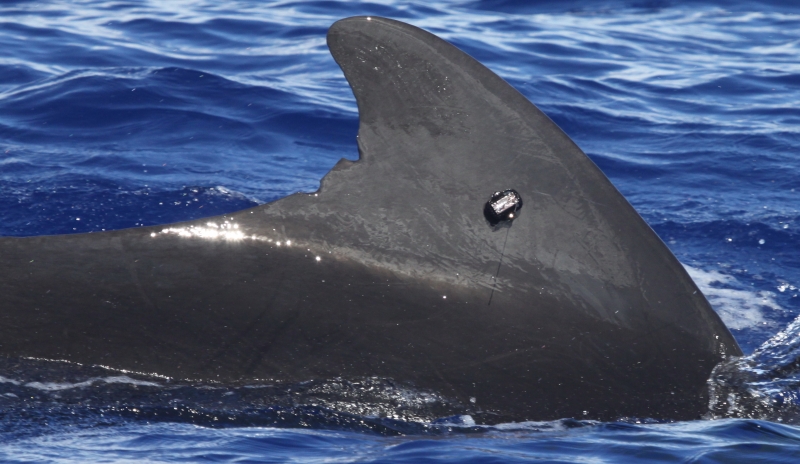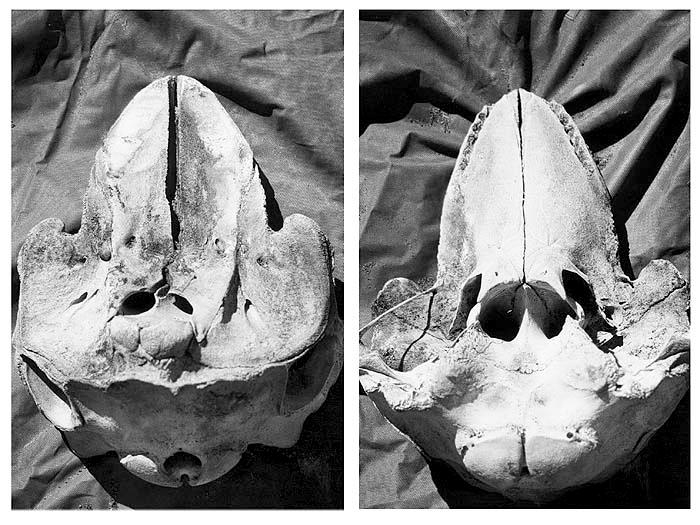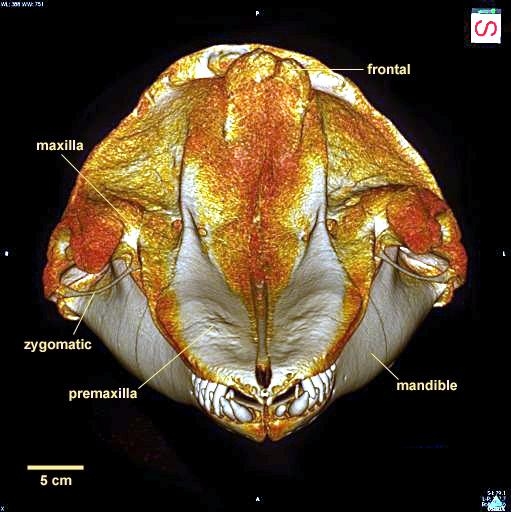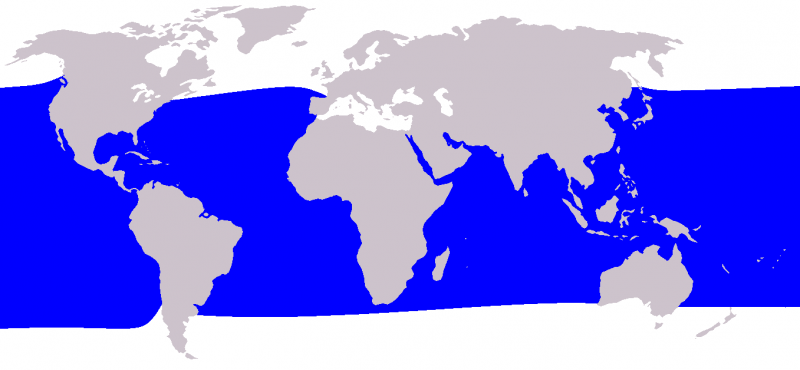“Globicephala macrorhynchus”
Short-finned Pilot Whales are among the largest of the delphinids with males reaching 6 to 7 meters and females reaching 5.5 meters. Males may weigh nearly 3,600 kilograms. Short-finned Pilot Whales have long robust bodies and bulbous heads, with up-sloping mouth lines and extremely short or non-existent beaks. The dorsal fin, which is situated about 1/3 of the way back from the head, is low and falcate with a wide base relative to its height varying with age and sex. The pectoral fins are long and sickle-shaped, up to 1/6 of the body length. There are 7 to 9 pairs of short pointed teeth in both the upper and lower jaws. Short-finned Pilot Whales are dark gray to black with a white to light gray anchor-shaped patch on the chest, a light gray saddle-patch behind the dorsal fin and a light gray or white streak from behind each eye that extends to the front of the dorsal fin. Short-finned Pilot Whales get their name from the original belief that there was a “pilot” or lead individual in their groups. The name for the genus, “Globicephala” is derived from a combination of the Latin words globus (“globe”) and kephale (“head”). The specific name “melas” is Greek for “black”. This species has also earned the nickname of “Pothead Whale” in some places because the shape of its head reminded early whalers of black cooking pots. In the areas of overlap, the Short-finned Pilot Whale is difficult to distinguish from the Long-finned Pilot Whale. Morphological differences between the 2 species include pectoral fin length and differences in skull shape and number of teeth, but these differences are subtle and the 2 species cannot be reliably distinguished at sea. Most sightings can be tentatively assigned to species based on the geographic location. Other species such as False Killer Whales and less commonly Pygmy Killer and Melon-headed Whales, may be confused with Short-finned Pilot Whales at a distance; however, the head shape, dorsal fin shape and position are different. The Short-finned Pilot Whale is found in most of the tropical, subtropical and warmer temperate areas of the world’s oceans with the exception of the Mediterranean Sea. In the western North Atlantic, the Short-finned Pilot Whale ranges from the mid-coast of the United States southward into the Caribbean and the Gulf of Mexico. In the eastern North Atlantic, Short-finned Pilot Whales range from the coast of France in the north to Madeira and the coast of northwestern Africa.
In the eastern North Pacific, the Short-finned Pilot Whale is commonly found from the coast of central California to Hawaiian waters and the eastern tropical Pacific. On rare occasions, the Short-finned Pilot Whale may be seen in waters as far north as Vancouver Island and Alaska. Latitude 25°S is the southernmost occurrence for both the Atlantic and Pacific coasts of South America. Distribution of the Short-finned Pilot Whale in the southern hemisphere is not as well-known, but they have been found in Sao Paulo, Cape Province, Western Australia, Tasmania, New Zealand and the Indian Ocean. Short-finned Pilot Whales are typically found in deep waters on the continental shelf, shelf break, the continental slope and in areas of high topographic relief. Seasonal inshore/offshore movements of these whales are thought to be related to the distribution of squid, their primary prey. Short-finned Pilot Whales off the Canary Islands make foraging dives to depths of up to 1,019 meters and 21 minutes in duration and engage in vertical sprints of 9 meters in order to capture fast-moving prey. Short-finned Pilot Whales are highly social; they are most often found in pods of 20-100 individuals, but some pods may number over 1,000. From photo-identification and genetic studies, researchers believe Short-finned Pilot Whales live in stable family groups, similar to those of Killer Whales and not in the more fluid groups characteristic of many smaller dolphin species. These stable family groups consist of related females and their offspring. Mature males also occur in these groups but genetic evidence has shown that these males are not the fathers of the calves in the pod. Several calves in one group may be fathered by the same male, suggesting that a male can enter a group for a brief period and mate with more than one female. Short-finned Pilot Whales appear to remain in their natal group for life; this type of social structure is very unusual among mammals. Consistent with their sexual dimorphism and adult sex ratio, Short-finned Pilot Whales are polygynous. Short-finned Pilot Whales are among the species of cetaceans that most frequently mass-strand, perhaps due to their strong social bonds.
There is pronounced sexual dimorphism in Short-finned Pilot Whales with males being longer and heavier, having a more pronounced melon and a much larger dorsal fin than females. Female Short-finned Pilot Whales reach sexual maturity at 6 to 7 years of age, while males do not reach sexual maturity until they are 12 or more years old. Gestation lasts 12 to 15 months and lactation continues for at least 2 years. The calving interval averages from 5 to 8 years and females continue to ovulate until almost 40 years old. Calving peaks occur in spring & fall in the southern hemisphere and in fall & winter in the northern hemisphere. Female Short-finned Pilot Whales cease ovulating at around 40 years but may live another 20 years in a post-reproductive state. They may continue to nurse their last calf for up to 15 additional years after they cease breeding. The duration of lactation increased with increasing age and concluded that older females invest less in calf bearing and more in calf rearing. Estimates of abundance exist for several areas. The northern area off Japan has a sub-population estimated at 4,000-5,000 and the southern region has an estimated sub-population of about 14,000 in coastal waters. There are an estimated 589,000 Short-finned Pilot Whales in the eastern tropical Pacific and an estimated 304 in waters off the North American west coast. In Hawaiian waters, there are estimated to be 8,846. The Gulf of Mexico contains at least 2,388 animals. In the exclusive zone of the eastern U.S. waters, there are an estimated 31,000 Short-finned Pilot Whales.
